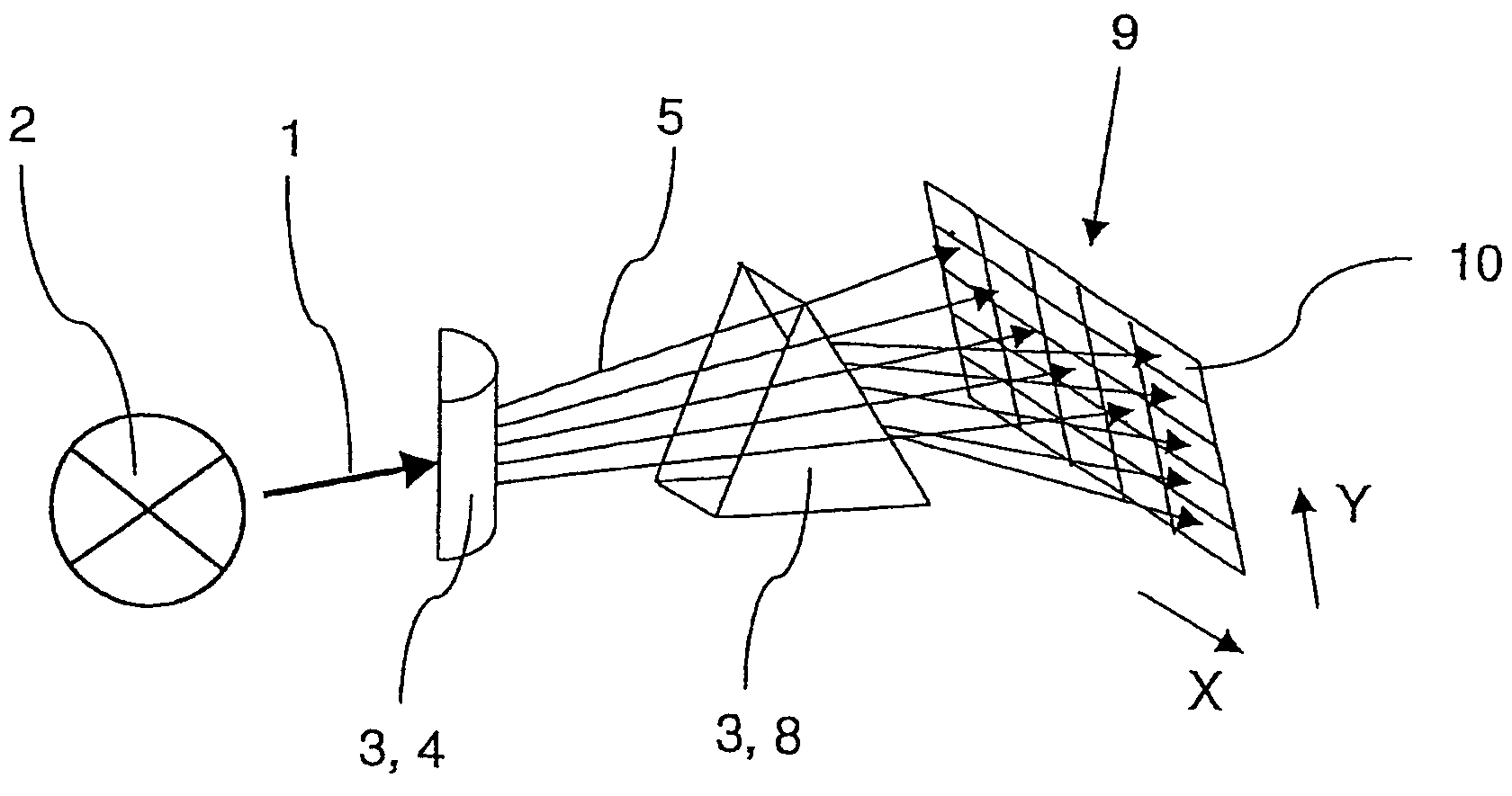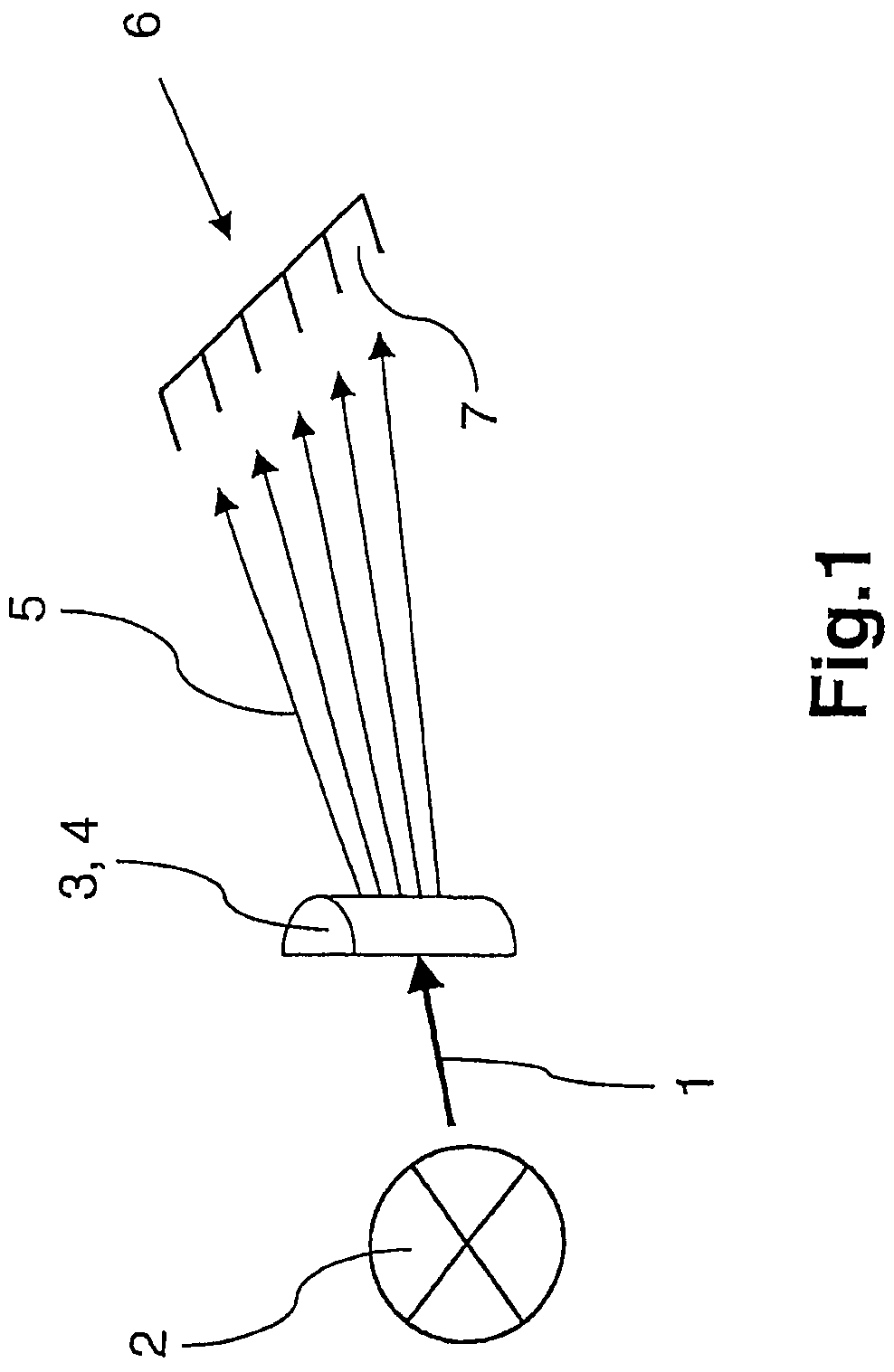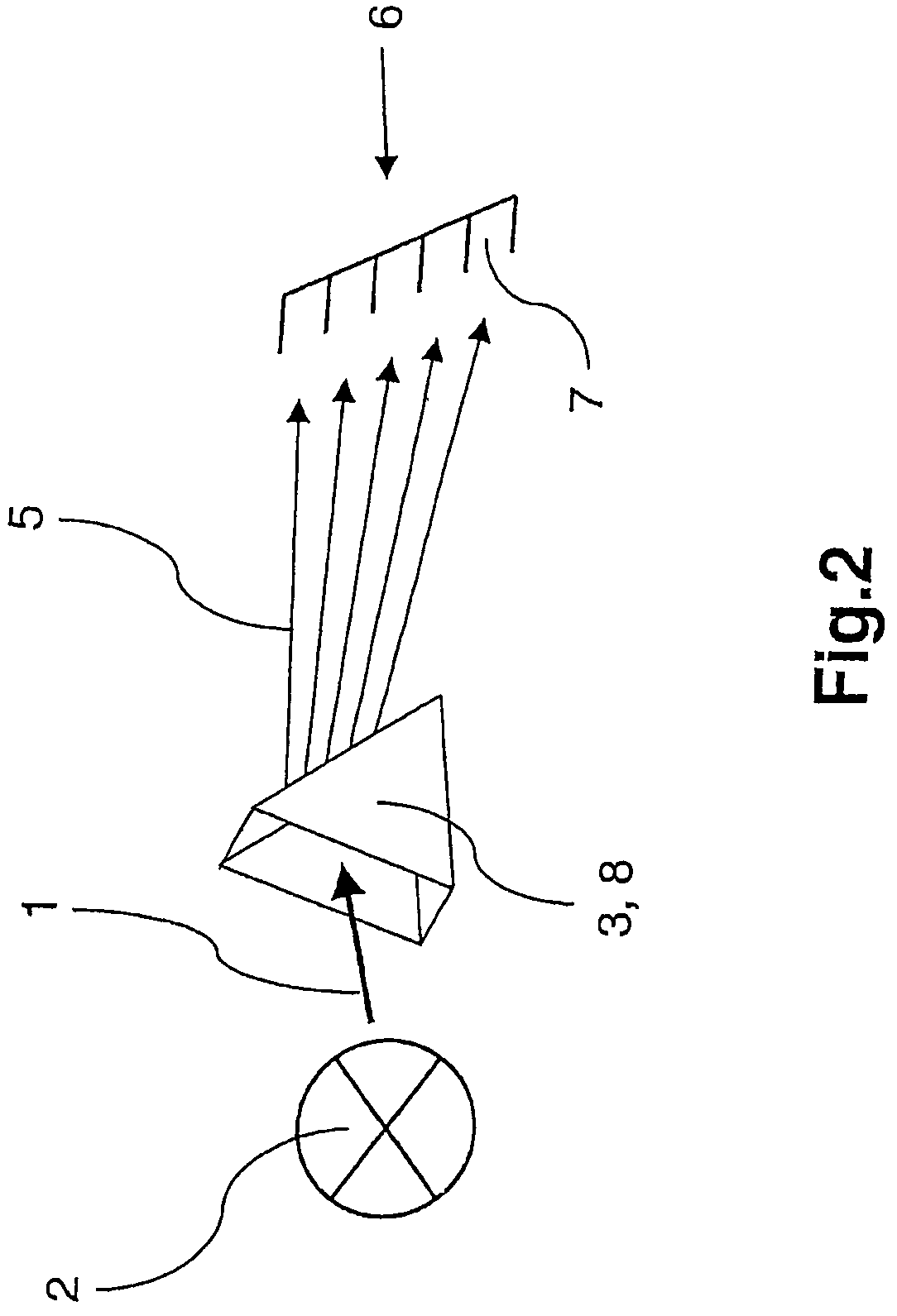Apparatus for the detection of photons of a light beam having a three-dimensional array of detectors
a technology of three-dimensional array and detector, which is applied in the field of fluorescence microscopy, can solve the problems of large time-consuming and laborious, large amount of equipment, and large amount of equipment, and achieve the effect of increasing the maximum counting rate processible by the detection device and high photon flux
- Summary
- Abstract
- Description
- Claims
- Application Information
AI Technical Summary
Benefits of technology
Problems solved by technology
Method used
Image
Examples
Embodiment Construction
[0025]FIG. 1 depicts a light beam 1 emanating from a spatially limited light source 2; specifically, light source 2 may be a biological sample material excited to emit fluorescence. Light beam 1 impinges on an optical component 3 which is made of a transparent material and is designed as a semicylindrical lens 4. Light beam 1 propagates through cylindrical lens 4 and, upon emergence from lens 4, is defocused due to refraction, thereby producing a divergent light beam 5 within a plane of illumination, whose surface normal is the cylinder axis. The photons are statistically distributed within the plane of illumination.
[0026]Widened light beam 5 then impinges on a detection device which includes a plurality of detectors 7 that form an array 6. FIG. 1 shows exemplarily merely five detectors 7, which are combined to form a one-dimensional array 6. Since the photons of light beam 1 are not detected in one detector, but rather are uniformly distributed over altogether five detectors 7, the...
PUM
 Login to View More
Login to View More Abstract
Description
Claims
Application Information
 Login to View More
Login to View More - R&D
- Intellectual Property
- Life Sciences
- Materials
- Tech Scout
- Unparalleled Data Quality
- Higher Quality Content
- 60% Fewer Hallucinations
Browse by: Latest US Patents, China's latest patents, Technical Efficacy Thesaurus, Application Domain, Technology Topic, Popular Technical Reports.
© 2025 PatSnap. All rights reserved.Legal|Privacy policy|Modern Slavery Act Transparency Statement|Sitemap|About US| Contact US: help@patsnap.com



